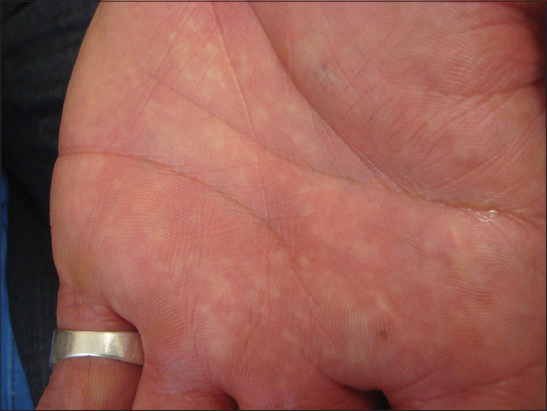Bier spots - is a local vasoconstriction (narrowing) of small blood vessels in the skin, characterized by pale white patches that disappear on diascopy or changes in limb position. The ICD-10 code for this condition is L98.8.
It occurs primarily in individuals between the ages of 20 and 40, although cases have been reported in children. According to some authors, this condition is more common in women, while others report a higher prevalence in men. The exact prevalence is unknown because this condition may be diagnostically underestimated due to its asymptomatic clinical presentation. The pathogenesis of its development is not fully understood. It is thought to be based on vascular anomalies, while other theories consider the vasoconstrictive response of arterioles to tissue hypoxia caused by increased blood viscosity, venous or lymphatic hypertension. Familial cases have been reported, suggesting a genetic factor. This anomaly is most commonly seen in healthy individuals. However, cases have been described in association with pregnancy (third trimester) and the following conditions:
- Cryoglobulinemia
- Polycythemia
- Aortic coarctation
- Aortic hypoplasia
- Lower extremity lymphedema
- Alopecia areata
- Lichen planus
- Marshall-White syndrome (insomnia + tachycardia)
- Peutz-Jeghers syndrome (lentiginous pigmentation + intestinal polyposis)
- Complete blood count and urinalysis
- The biochemical profile
- Thyroid hormones levels
- C-reactive protein
- Blood clotting tests
- Immunoglobulin and cryoglobulin levels
- Antinuclear and antiphospholipid antibodies
- Rheumatoid factor
- Arterial and venous Doppler ultrasound of the limbs
- Vitiligo
- Idiopathic guttate hypomelanosis
- Pityriasis versicolor
- Progressive macular hypomelanosis
- Post-inflammatory hypopigmentation
- Eruptive hypomelanosis
- Nevus depigmentosus
- Nevus anemicus

